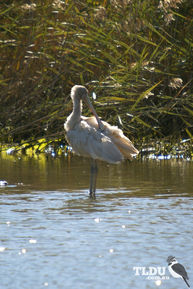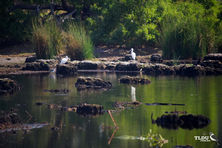
Shoppers Feedback:
Jan 17, 2017
Hello Ros,
I have now paid the invoice, but I would like to write to you just to say a big THANK YOU for getting me the Penguin!
The ChatterMate Penguin became a nice memory for me when I was in New Zealand, and I am so greatful to you for arranging so that I could have it! :-)
Thank you so much!!!!!!!!!!!
Regards,
Malin
Hi Ros,
Many thanks for your very kind email. I really appreciate your prompt reply!
I appreciate your advice regarding the decorations and customs. These are a gift for my daughter’s exchange student family so when she returns home on the weekend I will show her and see if she loves them as much as I do!
Thanks so very much again - I am truly grateful for your kind assistance.
Kind Regards
Bernadette
Ros,
Thanks again for the great customer service. It's a refreshing change!
Best regards,
Trevor
Hey Roz,
Thank you for your emails. Just loved my first order. The cute little Aussie bush critters are going to be used for an office Christmas decoration. My colleagues also liked them and talked about making an order to your site. I'll send you a photo when completed.
I'll be ordering more to send to my daughter's host family in America.
Fabulous service from you.
Kind regards,
Michelle
Thankyou. Order arrived today. One very happy grandson with his new beastly binoculars.
Regards,
Irene
- Home
- Wild Wonders
- Shop
- Aromas of Australia
- Australian Made
- Books
- Book Marks
- Christmas Decoration Sale
- Christmas Decorations
- Clocks
- Drink Holders
- Garden & Outdoor
- Gift Wrapping & Cards
- Home & Giftware
- Jewellery
- Keyrings
- New Products
- Pencils & Pen Holders
- Photo Frames
- Plush Toys
- Plush with Sound
- Sheepskin Rugs
- Stationery
- Stone Carvings
- Toys & Games
- Travel Goods
- Wedding
- Wild Figurines
- Wildlife Safety Products
- Wind Chimes
- Wine Charms
- View All Products
- Wildlife
- Australiana
- Explore
- Contact Us
Yellow-billed Spoonbill

Quick Facts
| Length: | - |
| Height: | 84 cm |
| Weight: | - |
| Colour: | - |
| Habitat: | Shallow freshwater wetlands, dams, lagoons and swamps. |
| Food: | Aquatic insects and their larvae. |
| Predators: | - |
| Status: | Not Present in Tasmania. Secure in all other states and territories |
The Yellow-billed Spoonbill is a large, white waterbird with a yellow face and spatulate (spoon-shaped) bill, and yellow legs and feet. During breeding season, the facial skin is outlined in black, the lacy outer wing plumes are tipped black and there are long hackles on its upper breast. Out of breeding, the face is yellow with no black outline and the lacy plumes and hackles are reduced or absent. Young birds are similar to adults, but have black markings on the inner flight feathers (tertials). It is most often seen wading slowly in shallow waters, sweeping its bill from side to side to feed.
Their large spoon-shaped bills easily distinguish spoonbills from all other water birds. The yellow bill and legs distinguish the Yellow-billed Spoonbill from the slightly smaller Royal Spoonbill, which has a black bill and legs, and a distinctive crest (more apparent during breeding season).
The Yellow-billed Spoonbill is found across Australia in suitable habitat, particularly in the north and well-watered inland areas, but is less common in coastal regions. It is a vagrant to Lord Howe Island and New Zealand.
The Yellow-billed Spoonbill is found in the shallows of freshwater wetlands, dams, lagoons and swamps, and sometimes in dry pastures, but rarely uses saltwater wetlands. It can use much smaller areas of water than the Royal Spoonbill.
The Yellow-billed Spoonbill feeds on aquatic insects and their larvae, using its bill to sweep shallow waters for prey. The spatulate bill has many vibration detectors, called papillae, on the inside of the spoon, which means the bird can feel for prey items even in murky water and can feed by day or night. Once food is caught, it lifts its bill up and lets the items slide down its throat. The Yellow-billed Spoonbill has less sensory papillae and a smaller spoon than the Royal Spoonbill, which means that it catches slower moving prey.
The Yellow-billed Spoonbill often nests in colonies with other water birds, such as ibises and Royal Spoonbills. It places its nest in high forks of trees over water, or in among reed beds, building a shallow, unlined platform of sticks, rushes and reeds. The male collects the nest materials while the female builds and both sexes share incubation and care of the young.
Last Updated: Friday 6th September, 2013
BirdLife Australia - www.birdlife.org.au
BUSH e-TELEGRAPH
Signup for our monthly newsletter the "e-Telegraph"
Quick Links
Home | The Beginning | About The Land Down Under | Wild Wonders | Advertise on Wild Wonders | Christmas Decoration Sale | Christmas Tree Decorations | Drink Holders | Plush with Sound | Stone Carvings | Wildlife Wine Charms | Freebies | Australian Wildlife | Help Our Wildlife | Australiana | Photo of the Month | Explore The Land Down Under | Contact Us | Legal Notices


